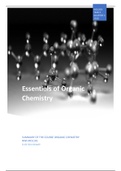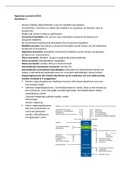Samenvatting
Summary Essentials of Organic Chemistry (NWI-MOL101) Radboud University
Detailed summary of the lecture 1 to 11 of Essentials of Organic Chemistry. Note that this is about the first half of the course and thus not all lectures are included. However, this first half was most important.
[Meer zien]






